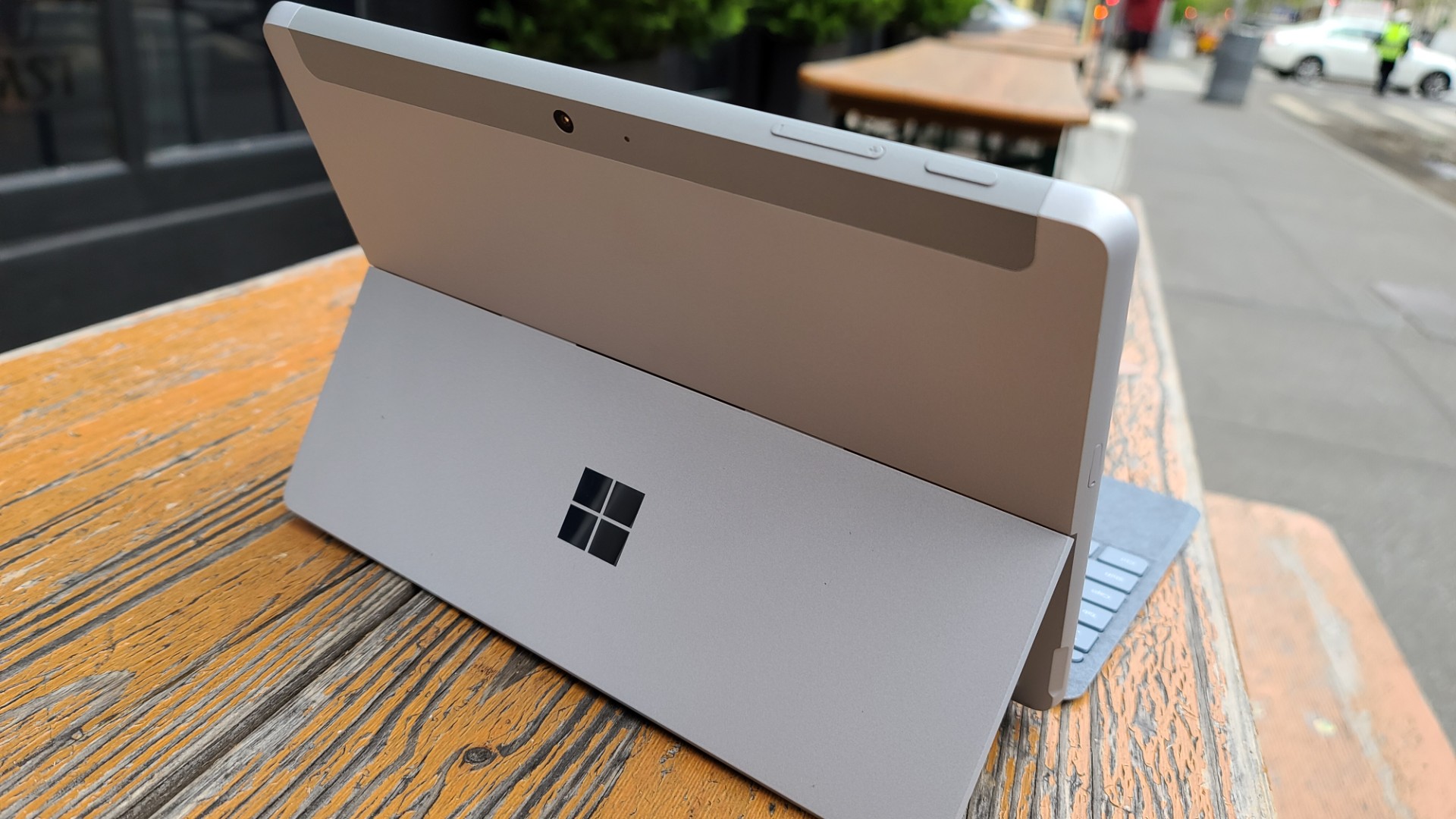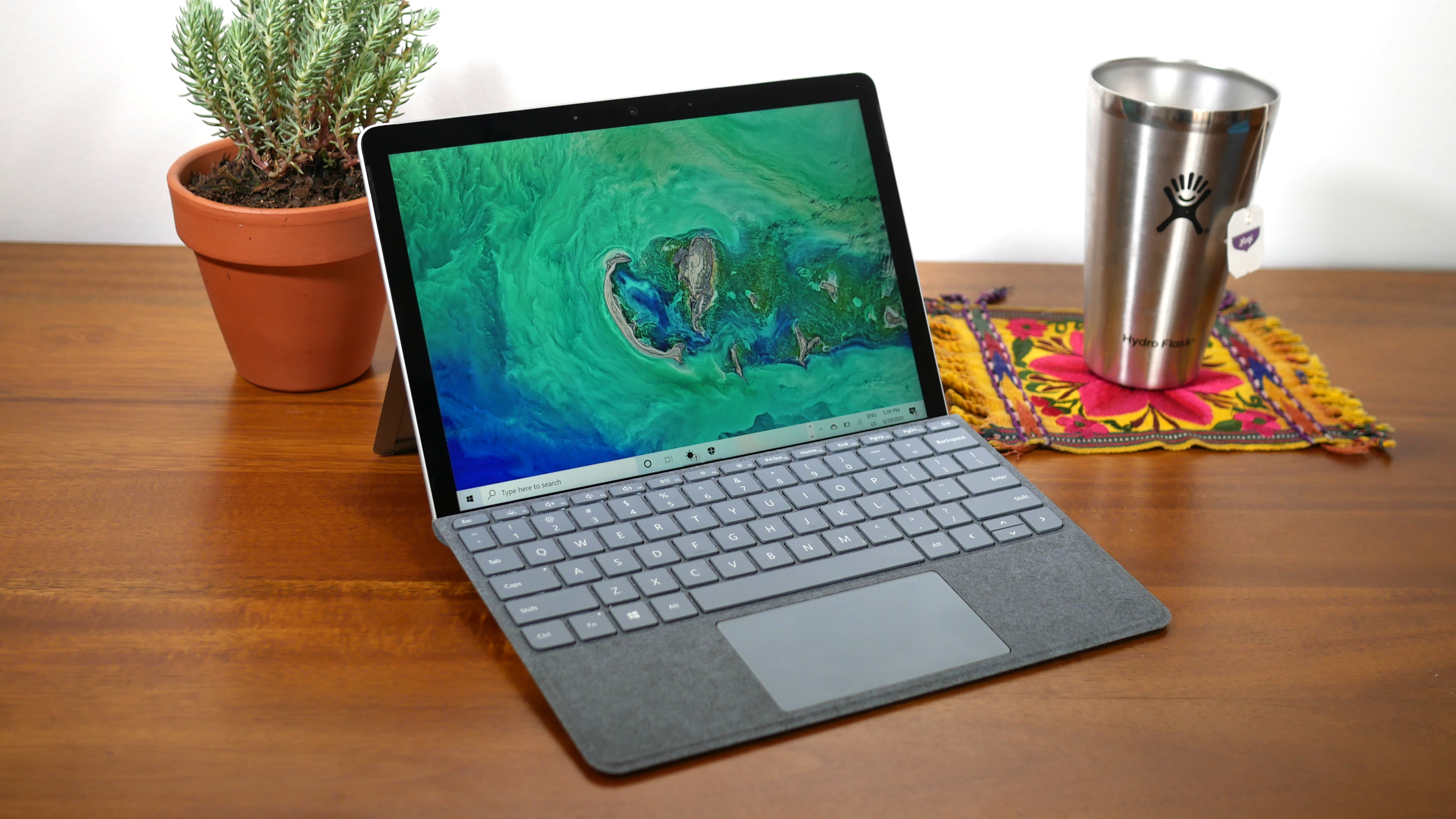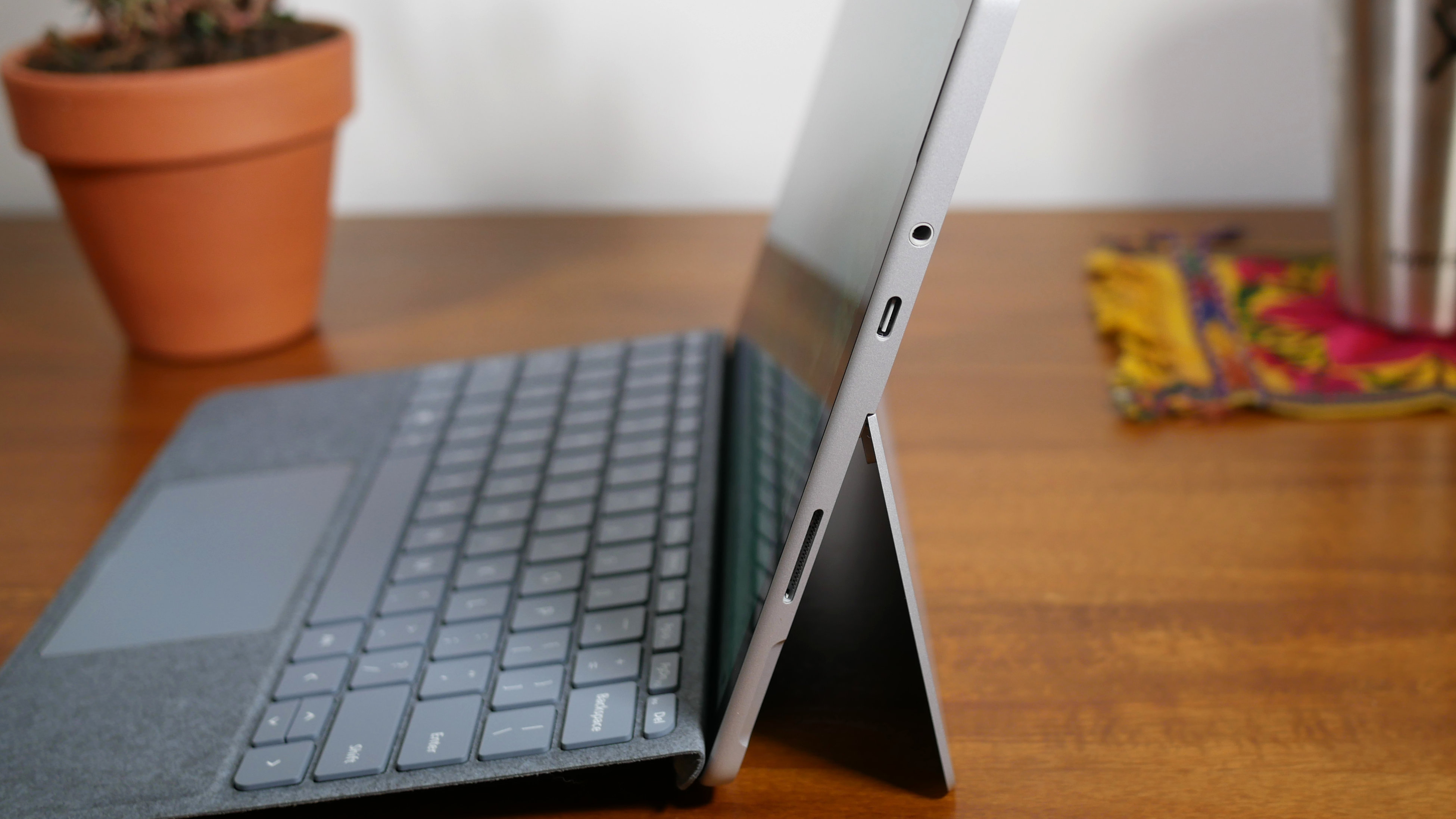Surface Go 2 vs iPad: Which budget tablet wins?
Which sub-$400 tablet should you buy, the iPad or the Surface Go 2?

It feels weird to put Microsoft and Apple against each other in a battle of budgets. And yet, here we are, comparing the $399 Surface Go 2 against the $329 iPad. These are the top two tablets for anyone who doesn't want to empty their purse on the iPad Pro (the undisputed best tablet around). But which one should you buy?
That question is more complicated than ever. The Surface Go 2 improved upon its predecessor in every way, and now sports a larger 10.5-inch panel, faster CPUs and much longer battery life. But is that enough to top the iPad -- the quintessential tablet that has ruled since the dawn of the product category? Read on to find out.
Value and configurations
The iPad is the cheaper of the two tablets, carrying a starting price of $329. The Surface Go is a tad pricier, at $399, but the base model gets you 64GB of storage compared with the iPad's measly 32GB.
The cheapest iPad has an A10 Fusion chip, along with 3GB of RAM and 32GB of storage. When configuring the iPad, the only change you can make is upping the storage to 128GB for an extra $100. We strongly recommend spending the $429 if you have the funds. There are also LTE versions of the iPad that cost $130 more than their respective Wi-Fi editions.
Getting back to the Surface Go 2, Microsoft's tablet comes with an Intel Pentium 4425Y CPU, 4GB of RAM and 64GB of storage. From there, doubling RAM to 8GB and storage to 128GB brings the price up from $399 to $549. If you need more power, you can get the high-end model with a Core m3-8100Y CPU for $629. Adding LTE notches the price up to $729.
Winner: Draw
Design
It's form versus function when you compare the designs of the iPad and Surface Go 2. Microsoft's tablet has a kickstand that lets you prop the screen up or convert the tablet into a laptop with the optional keyboard attached. The kickstand, along with additional ports, give the Surface Go 2 an edge over the iPad when you need the tablet for more than watching videos or browsing the web.
Sign up to receive The Snapshot, a free special dispatch from Laptop Mag, in your inbox.
I don't mean to imply that the Surface Go 2 isn't a good-looking device; It has a sleek magnesium chassis with a stylish Microsoft logo on the rear kickstand. Slimmer bezels give the tablet a modern appearance, although the black frames surrounding the screen are still too chunky for my liking. The tablet also feels great in the hand thanks to its subtle texture.
Where the iPad edges out the Surface Go 2 is in portability. At 1.1 pounds and 0.3 inches thick, the iPad is the same size, but just a tad lighter than the Surface Go 2 (1.2 pounds, 0.3 inches). You probably won't notice the difference when you're carrying these slates around, but it's worth considering. The iPad also comes in more colors. Microsoft only sells the Surface Go 2 in platinum whereas the iPad comes in silver, gold and Space Gray.
Aside from those minor advantages favoring the iPad, we prefer the design of the Surface Go 2. The iPad is a simple, streamlined slate, but its design has lost its luster over the years. There are no special features worth mentioning except that, for better or worse, the tablet still has a physical Touch ID home button nestled on thick bezels surrounding the 10.2-inch display. Face ID remains exclusive to the higher-end iPad Pro series whereas the Surface Go 2 has IR sensors for Windows Hello login.
Winner: Surface Go 2
Ports
This isn't even a contest. The iPad charges via a Lightning connector and has a headphone/mic jack.
In contrast, the Surface Go 2 has the preferred USB-C input, along with a Surface Connect port, a headphone/mic jack, a microSD card slot and a Nano SIM for LTE.
Winner: Surface Go 2
Display
These two tablets offer some of the best displays of any device at this price point. As to which one offers the better viewing experience, it's too close to call.
If I had to grab one before a long plane ride, I'd take the Surface Go 2 for its slightly larger screen. But if I were reading outside on a sunny day, I might take the iPad because of its brighter screen.
Our colorimeter gave us hard evidence as to how similarities in quality between these two displays. The Surface Go 2 covers 107% of the sRGB color gamut, making it a bit more colorful than the iPad Pro's panel (105%). They both topped the 92% category average.

The iPad struck back by reaching 450 nits of brightness. The Surface Go 2 gets plenty bright as well, but its 408 nits is a tad dimmer than the iPad. Again, both tablets crush the average (293 nits).
Winner: Draw
Keyboard and stylus
When you buy a Surface Go 2 or iPad, only the tablet comes in the box. So if you get tired of typing on the on-screen keyboard, you'll need to buy their respective detachable keyboard accessories.
Of the two, the Surface Go 2's Type Cover has greater functionality and is more comfortable to type on. It's also cheaper than the iPad's Smart Keyboard Folio ($159), at $139, yet feels more premium. My only quibble with the Type Cover keyboard is that the keys feel cramped. This issue is specific to the Surface Go 2 as its Type Cover is smaller than the one for the Surface Pro 7.
Looking past the small keys, the Surface Go 2's Signature Type Cover has a plush Alcantara fabric that is available in Black, Poppy Red, Ice Blue and Platinum colors. The keys are snappy and offer the right amount of bounce for my fingers to effortlessly jump from one key to the next.
Another benefit the Type Cover has over the Smart Folio is a touchpad. Apple added cursor support to the latest version of iPadOS but the only keyboard the Cupertino giant sells with a touchpad is the Magic Keyboard for the iPad Pro. The touchpad on the Type Cover is small, but it gets the job done. I navigated websites and executed Windows 10 gestures, like pinch-to-zoom, with ease.
It's better than nothing, but the Smart Folio for the iPad is nothing to write home about. It's easy to connect and looks sleek, but the keys are mushy and there is no touchpad.
Both tablets support stylus input, and you'll spend $99 whether you get the Apple Pencil or the Surface Pen. We haven't done any side-by-side comparisons between these two, but we've used them before and found them to both be competent.
Winner: Surface Go 2
Performance
The Surface Go 2 and iPad provide plenty of performance for the sort of tasks people do on a tablet. That includes streaming 4K videos, browsing the web with multiple tabs open, and playing apps. You won't get the same blistering speeds as the iPad Pro or Surface Pro 7, but those pricier slates are meant for power users and as laptop replacement, not for the everyday consumer.
As for which of these tablets performs better, it's a close call. The Surface Go 2 topped the iPad in our benchmark testing, but those results don't tell the full story.
Our Surface Go 2 review unit, a high-end model with an Intel Core m3-8100Y CPU and 8GB of RAM, scored a 1,563 on the Geekbench 5 overall performance test. That surpasses the iPad's result of 1,429. However, when you compare the slates apples-to-apples, the $399 Surface Go 2 with an Intel Pentium 4425Y and 4GB of RAM, notched scores of just below 1,000.
Winner: iPad
Battery life
Whether you pick the Surface Go 2 or the iPad hoping for long battery life, you won't be disappointed. The Surface Go 2 took a big step forward from its predecessor, lasting 11 hours and 39 minutes on our battery test, which involves continuous web surfing over Wi-Fi at 150 nits.
The iPad is one of few tablets with longer endurance, having outlasted the Surface Go 2 with a runtime of 11 hours and 58 minutes. Both tablets crush the 8 hour and 10 minute average.
Winner: iPad
iPadOS vs Windows 10 (in S mode)
We won't factor this round into our points totals, but we'd be remiss not to mention the differences between iPadOS and Windows 10 Home (in S Mode).
iPadOS will be familiar to iPhone owners or anyone who owns an older iPad. Apple hasn't changed the clean UI, but iPadOS adds widgets to the homescreen, more capable multitasking and a new version of Safari. The most recent version even brings long-awaited cursor support, although you'll need to buy a third-party keyboard to enjoy the feature.
iPadOS still feels like a mobile-first operating system, especially given the myriad of apps available in the App Store. This arguably makes the iPad a better tablet for entertainment and consuming content.
If you're reading this, you're probably already familiar with Windows 10. Before I give a brief overview of the OS, it's worth mentioning that the Surface Go 2 runs Windows 10 Home in S Mode out of the box. S Mode limits downloads to those in the Microsoft Store, so you're locked out of installing third-party software. You can revert to the full Windows 10 Home, but doing so revokes your access to S Mode for good.
Windows 10 is a desktop operating system with few apps optimized for tablets. As such, most of your content consuming will be done through a browser. Of course, the ability to download third-party apps (once you exit S Mode), makes the Surface Go 2 a better tablet than the iPad for productivity.
Overall winner: Surface Go 2
With a more modern and practical design, a wider selection of ports and a much better keyboard accessory, the Surface Go 2 is a better option than the iPad if getting work done is your main concern.
| Row 0 - Cell 0 | Surface Go 2 | Apple iPad |
| Design (10) | 8 | 7 |
| Ports (10) | 5 | 3 |
| Display (15) | 13 | 13 |
| Keyboard/touchpad (15) | 12 | 10 |
| Performance (20) | 13 | 14 |
| Battery life (20) | 18 | 1 |
| Value (10) | 7 | 7 |
| Overall (100) | 76 | 73 |
But don't count out the iPad. It offers slightly longer battery life and faster performance than the base model Surface Go 2. Most importantly, iPadOS has a much wider selection of apps than Windows 10 Home, making the iPad an excellent choice if you're buying a tablet to consume content.
Phillip Tracy is the assistant managing editor at Laptop Mag where he reviews laptops, phones and other gadgets while covering the latest industry news. After graduating with a journalism degree from the University of Texas at Austin, Phillip became a tech reporter at the Daily Dot. There, he wrote reviews for a range of gadgets and covered everything from social media trends to cybersecurity. Prior to that, he wrote for RCR Wireless News covering 5G and IoT. When he's not tinkering with devices, you can find Phillip playing video games, reading, traveling or watching soccer.









